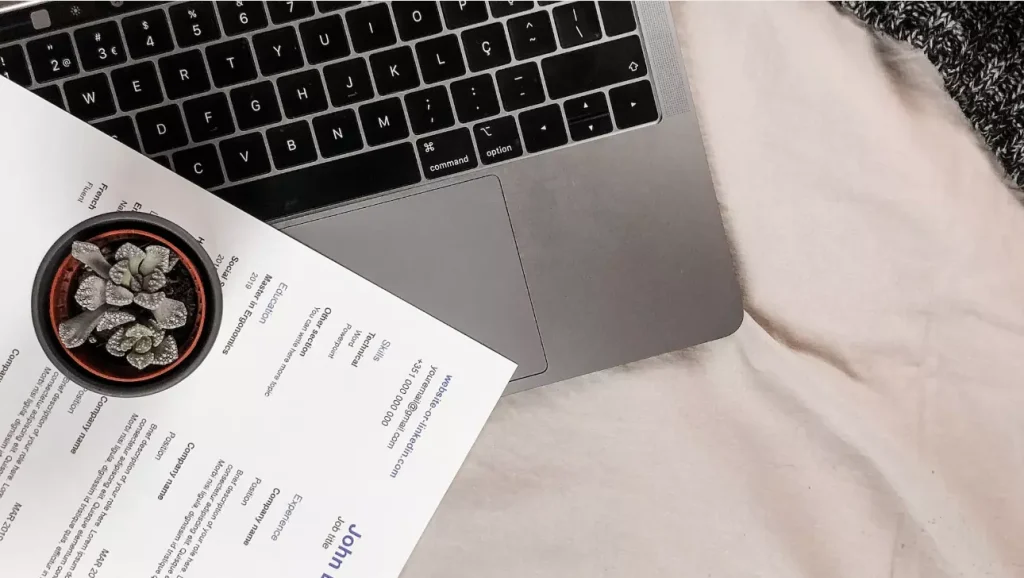Table of Contents
Introduction:
When applying for a job in the creative industry, your resume is often your first chance to make a strong impression on potential employers. Unlike resumes for more traditional industries, a resume for a creative position requires a different approach to showcase your skills and experiences. In this blog post, we will discuss how to write a resume for a creative industry and provide answers to some frequently asked questions.
Mastering the Art of Crafting a Creative Industry Resume
In this blog post, we’ll walk you through the essential steps to write a standout resume that captures your creative essence and gets you noticed by top creative employers.
- : Before you start drafting your creative resume, it’s crucial to research the industry and the specific job you’re targeting. Different creative fields have varying expectations when it comes to resumes. For instance, a resume for a graphic designer may differ significantly from one for a copywriter or a UX designer. Tailoring your resume to the specific creative niche is the first step towards success.
- : Creative industries appreciate candidates who think outside the box. Your resume’s design should reflect your artistic flair while remaining professional and easy to read. Consider using unique fonts, colors, and layouts that align with your personal style but still maintain readability. Remember, your resume is a visual representation of your creativity, so make it visually engaging.
- : Begin your resume with a compelling summary or objective statement. This should be a concise, impactful paragraph that highlights your unique skills, experiences, and what sets you apart in the creative world. Show potential employers that you understand their needs and are the perfect candidate to meet them.
- : In creative industries, your work speaks volumes. Include a section where you showcase your portfolio, which can include links to your website, social media profiles, or attachments of your best work. Whether it’s design samples, writing samples, photography, or videos, ensure your portfolio demonstrates your skills and creativity.
- : List your skills in a separate section, emphasizing those that are directly relevant to the job you’re applying for. This might include software proficiency, artistic techniques, project management skills, or any other abilities that make you a strong candidate.
- : Quantifying your achievements is crucial on any resume, but it’s especially impactful in the creative industry. For instance, instead of saying you “managed social media accounts,” say you “increased social media engagement by 40% in six months.” Concrete numbers and results will make your accomplishments more impressive.
- : Customize your resume for each job application. Highlight the skills and experiences most relevant to the specific role you’re targeting. Tailoring your resume demonstrates your genuine interest in the position and the company.
- : Attention to detail is critical in creative industries. Carefully proofread your resume to eliminate typos, grammatical errors, and inconsistencies. Consider seeking feedback from peers or mentors in the industry to ensure your resume is flawless.
- : Many employers use applicant tracking systems (ATS) to screen resumes. To pass this initial hurdle, incorporate relevant keywords from the job description into your resume. Be sure to use these keywords naturally and in context.
- : Don’t forget to include your up-to-date contact information, including your professional email address, phone number, and LinkedIn profile. Make it easy for potential employers to reach out to you.
10 FAQs about How to Write a Resume for a Creative Industry:
1. Should I include a creative resume template?
Using a creative resume template can help your resume stand out. Just ensure that the template aligns with your personal style and the industry you are applying for.
2. How can I showcase my creativity in my resume?
Consider incorporating visual elements such as color schemes, icons, or infographics to highlight your creative skills. Additionally, provide links to your online portfolio or attach samples of your work to demonstrate your abilities.
3. What sections should I include?
Include standard sections like contact information, summary/objective, work experience, education, and skills. However, you can also include sections like relevant projects, exhibitions, awards, or volunteer work, depending on the creative field you are applying to.
4. Should I include a professional summary or objective?
Yes, including a summary or objective statement at the beginning of your resume can provide employers with a quick snapshot of your qualifications and goals. Tailor it to the specific job you are applying for.
5. How should I describe my work experience?
Focus on the outcomes and results you achieved in previous roles, emphasizing your creativity, problem-solving skills, and the impact you made. Use action verbs and metrics whenever possible.
6. Is it necessary to include references?
It is generally not necessary to provide references in your resume. Instead, indicate that references are available upon request.
7. Should I include my GPA or academic achievements?
Unless you are a recent graduate with a particularly impressive academic record, it is best to focus on your professional experiences and achievements. Use the limited space available to highlight relevant industry experience.
8. How long should my resume be?
A creative resume does not have a strict length requirement, but it is generally recommended to keep it concise and limited to one or two pages.
9. How important is it to tailor my resume to each job application?
Customizing your resume for each job application is crucial. Analyze the job description and the company’s values and incorporate keywords and skills that align with them.
10. Is it necessary to use keywords in my resume?
Using relevant keywords is essential as many companies now rely on applicant tracking systems (ATS) to scan resumes. Incorporating specific industry-related keywords can help your resume pass through these systems to be seen by human recruiters.
Conclusion:
Writing a resume for a creative industry requires a careful balance of showcasing your talent while maintaining professional standards. By highlighting your creative skills and adapting your resume to specific job applications, you can increase your chances of landing interviews and securing your dream job in the creative industry. Remember, your resume is a reflection of your creativity, so make it visually appealing and let your skills shine through.
Buildfreeresume.com has a consumer rating of 4.83 stars on Sitejabber.




